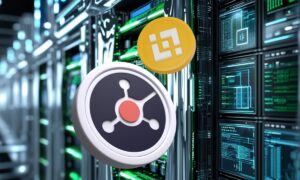Serge Belamant is undoubtedly one of South Africa’s greatest thought leaders and social entrepreneurs. His innovative computer science abilities led to him being awarded the Republic of South Africa’s (RSA) government contract from South Africa Social Security Agency (SASSA) to pay all social grants in the RSA.
Founder, Chairman, and CEO of NET1 Technologies from 1989 – 2017 Serge invented the Funds Transfer System (FTS) patented technology and was instrumental in developing the Universal Electronic Payment System (UEPS). He’s also a founding patent holder of the first form of blockchain technologies.
Like any start-up, NET1 Technologies wasn’t without its early challenges trying to get banks to use its UEPS, bound by regulation and tradition, they were highly risk-averse. The breakthrough moment for NET1 Technologies was in 1995 when Visa hired Serge’s firm to invent a Chip Offline Pre-authorized Card (COPAC) using his FTS/UEPS technology. By merging these two technologies together and EMV, this became a landmark moment for Visa where users were protected against the misuse of credit and fraud even when transacting offline.
The second breakthrough moment for Serge’s company came in 1999 when Net1 purchased Cash Payment Services (CPS) from the First National Bank of South Africa. At the time CPS was a system that paid most of the welfare grants within the RSA. The antiquated system was in dire need of modernization as it was not capable of paying out grants to millions of South Africans, who predominantly lived in the rural areas of the country.
One of his greatest achievements was the transformation of the Republic of South Africa’s social assistance program. As the CEO of NET1 Technologies, at its peak, Serge Belamant was responsible for administering and distributing grants for tens of millions of South Africans across nine different provinces. Serge discussed a number of topics with our correspondent in a recent interview.
The History of Social Welfare in SA
Serge explained to our correspondent that what was wanted was a system that would look and feel the same for all beneficiaries throughout South Africa. The reason was simple – people move around, and nobody looked at the map to see where one provincial border suddenly merges into another. This meant somebody could be paid one day in KwaZulu-Natal, and the next day they needed to transact in the Eastern Cape.
“Obviously, the only way to solve that problem was with an innovative technology solution that would work the same way regardless of where beneficiaries lived or transacted. We asked the question ‘How can we achieve this level of ubiquity?’ and this is the way we went about finding the solution.”
That meant Net1 needed to make use of whatever was guaranteed to be available in South Africa such as the National Payment System (NPS) as controlled, operated and deployed by the banks including Automatic Teller Machines (ATM’s) and point of sale terminals (POS). These system were EMV compliant and thus operated on-line for all transactions.
How did you go about tackling the logistics?
“Firstly we looked at implementing thousands and thousands of pay points in order to service the rural areas of South Africa, where there were no buildings, no shops, no electricity and no communication network. Any infrastructure such as banks and post offices only existed in towns, a legacy of apartheid. Therefore we needed a technology that would work offline with no dependence on electricity and communication. Secondly, the same technology had to work seamlessly in urban areas where first-world financial systems were available”
The question for the team was what technology could they use? There was nothing in the world that came close to providing an answer to these requirements, not even Visa or Master Card that focused on credit cards and relied on the existence and availability of first world infrastructures. Wanting to do something in an urban area where every point of sale device and every ATM was connected online to a backend system was obvious but these systems wouldn’t resolve the problems of providing the same functionality in rural areas where there was no connectivity and often no electricity.
“First world systems couldn’t operate off-line, because that would have immediately meant that whoever issued the card, would be taking a huge financial risk. Secondly and more importantly was the security of the beneficiaries. We’re talking about people that very often don’t have cell phones. And if they did, they are older versions that cannot download applications.“
Did that cause an ethical dilemma?
“The ethical dilemma was how are we going to make sure that we are dealing with the right person?”
“Banks were saying that all people needed to do, was to select a four or six-digit PIN code and that would be good enough because this works everywhere else in the world. The problem was dealing with the tens of millions of people throughout rural South Africa who weren’t sophisticated and to ask them to choose a four-digit PIN and understand its ramifications would lead to fraud and abuse. What would happen if they couldn’t remember their PIN code? What if they wrote it on the card itself? What if they used an obvious PIN code such as 1234 or the year in which they were born?”
Serge went on to say, “Cards were often lent to others, got stolen, kept as collateral or taken from the elderly, often by family members or neighbors, resulting in their money being stolen. At Net1 we knew we had to introduce something that would protect beneficiaries.”
What kind of options did you look at?
“It became apparent that we needed to be able to use something which was unique to each beneficiary and that was a biometric trait. We looked at fingerprints, voice and face recognition and concluded that the most practical, and the most accepted was fingerprints.”
Serge felt this was a simple option because they didn’t need to convince people on the idea because fingerprints had already been introduced by Home Affairs. This meant it would be easy for beneficiaries to identify themselves and authorize their transactions and this would allow the government to pay them securely on a month to month basis.
Under Serge Belamant’s leadership, the technological breakthrough Net1 made included ‘morphing’ the introduction of ‘variable PIN’ and the design and construction of a 1: N Biometric Comparison Engine which when use together allowed smart cards to function in the UEPS as well as in the EMV environment. Serge believed that by inventing a new system capable to work offline, use biometric verification and able to interoperate with existing first world payment systems standards and facilitate other areas of government, it would go a long way to assist Net1 to win the next national tender.
How did you go about implementing the idea and protecting the beneficiaries?
“All we needed to do was to capture beneficiaries’ fingerprints during registration and check that these matched the ones presented whenever a transaction was effected. If a card was stolen, it made no difference whatsoever because the card could not be used by a third party. The card could not be borrowed by anyone unless the beneficiary authorised a third party e.g. wife, father or daughter to use the card, in which case, we would store their fingerprints on the same card in addition of those of the beneficiary. Wherever a transaction took place, we always knew who performed and authorised the transaction. We could place certain spending limits based on the fingerprints stored or even specify the retailers at which each fingerprint could be used.”
“As I mentioned previously, government was paying out in excess of 160 billion Rand per annum to welfare recipients. You can well imagine that this massive sum of money would be targeted by people or nefarious organizations who would attempt to beat the system. For example, ghost beneficiaries could be registered that is – people who do not actually exist.”
“The other concern at the time in designing the system was that members of staff would register themselves instead of their clients. By doing so, they would receive the grant instead of the legitimate beneficiary. By introducing a biometric measure, we were able to ascertain who actually registered each beneficiary by taking the fingerprints of the operators who were performing registrations. As a result, it became very difficult for them to register themselves as the cardholder, rather than the legitimate beneficiary, without being caught.”
Ultimately Net1 Technologies built a tough system to protect the beneficiaries in South Africa against abuse. For example, the fingerprints of certain individuals such as a daughter or friend could only be utilized to perform card loading but not for the spending of the grant in transactions. The company built an entire system around these concepts in order to protect beneficiaries. By introducing this system Net1 Technologies reduced the fraud that was taking place in the system, and saved the fiscus massive amounts of money to the tune of a couple of billion Rand per annum by simply removing ghosts beneficiaries and stopping payments that the NPS was not able to detect or prevent.
Another big drive of Serge’s technology was to deliver a solution to combat fraud against beneficiaries but also against government. What was incredibly important to Serge was that the 160 billion Rand a year made available by Government to redress the wrongs of the past, would be the start rather than the end in providing financial inclusion for all South Africans in order to improve their way of life and provide the dignity they deserved.”
What else was important to you at the time?
“I wanted to make sure that this money was distributed in a way that could protect less advantaged areas compared to others. At the time many people were moving from rural to urban areas which was maiming the entire financial well-being of rural communities”
Serge continued to explain, “By using the system correctly, it meant we could impose certain control over grants. For example, the grants could only be utilized in certain areas of the country and could only be spent at designated stores. Therefore, the system would create an environment that would be conducive for small businesses (SMMEs) to thrive even in the deep rural areas. This would help in preventing a continuous migration of people from rural areas to urban areas.”
What were you trying to achieve in transforming the South African social welfare system?
“As a result of this technology, approximately 10 million people now have access to a formal and secure financial service. Those services used to be delivered by less reputable companies who were very often unregistered without a license to operate. The system was broken where anybody could take whatever they could from beneficiaries. ‘We believe that financial inclusion, by providing properly controlled, properly monitored, properly understood financial products, which is far more affordable than anything available in the market, differentiated us from the existing service suppliers whilst benefiting the poorest of the poor.”
It’s no wonder Serge Belamant is known as the Henry Ford of the technological world, a thought leader ahead of his time. His genius in transforming the social welfare system in South Africa is legendary. He constructed a financial system that would be flexible enough to implement new social welfare programmes throughout South Africa in the future without the need for major developments. Under his leadership until his retirement in 2017, Serge Belamant took Net1 Technologies public in 2005. Net1 completed an initial public offering and listed on the Nasdaq Stock Market. In October 2008, Net1 listed on the Johannesburg Stock Exchange (JSE) in a secondary listing, which enabled the former Aplitec shareholders (as well as South African residents generally) to hold Net1 common stock directly.



































